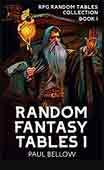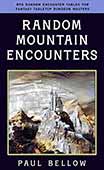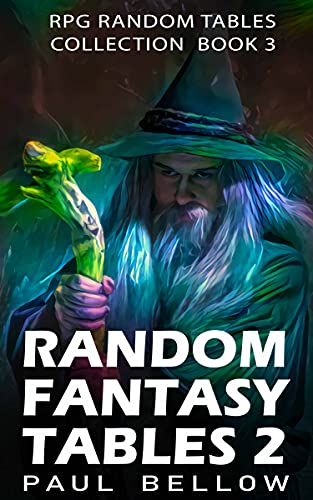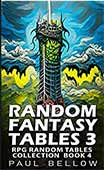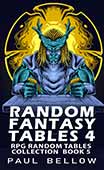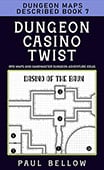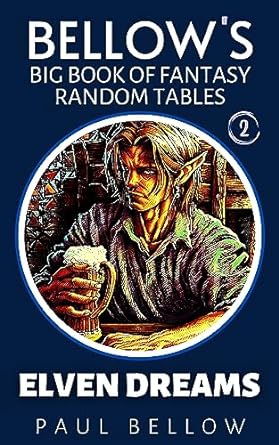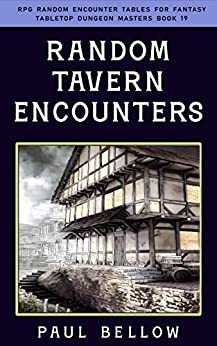Imagine the exhilarating rush as the Dungeon Master unveils the scenario: a lair teeming with treacherous traps, shadowy foes, and a formidable antagonist poised to unleash mayhem. Each player’s heart races as they strategize, eager to leverage their unique abilities while crafting plans to counter the boss’s potentially devastating attacks.
Tension mounts…will the rogue slip past the traps undetected, or will their luck falter? Meanwhile, the wizard is anxiously tallying spell slots, acutely aware that they must conserve a pivotal spell for the moment when all hope seems lost. Amidst the suspense, laughter breaks out during unexpected moments, such as when the cleric’s healing incantation backfires, transforming into an unintended fireball. Gales of laughter erupt around the table as the characters regroup and adapt quickly to the ensuing hilarity.
Each decision, whether awesome or absurdly disastrous, becomes a highlight reel—reminding players that amidst the tension, joy, and occasional chaos, every boss fight is a chance to etch memories that will become the stuff of gaming folklore. So, when it’s time for that climactic encounter, embrace the chaotic ride of emotions. Every roll of the dice is not just a step toward victory or defeat; it’s an integral part of a story that’s being written at your table, one laughter-filled session at a time.
The universal appeal of boss fights in D&D and other fine tabletop RPG systems is deeply rooted in the human love for tales of heroism and triumph over legendary foes. These battles are not just about hitting high numbers but also crafting a story where characters rise against adversity, overcoming challenges that seemed impossible at the start. The anticipation builds as the Dungeon Master describes the ominous lair and the boss’s tyrannical laughter echoing in the cavernous depths, setting the stage for an unforgettable showdown.
But it’s not all serious business. Often, the chaos of combat leads to unforgettable moments of hilarity. Perhaps a mighty warrior trips over an illusionary banana peel, or a wizard miscasts a spell, turning an ally into a duck at the most inopportune time. These whimsical interludes are what make D&D boss fights a unique blend of drama and comedy, offering players camaraderie and stories they’ll reminisce about for years.
When it comes to the story, boss fights are sure-fire opportunities for epic storytelling. They are the culmination of plot arcs, where heroes confront their nemeses. These encounters often reveal deep storytelling elements, such as the boss’s motivations or long-hidden secrets that directly impact the characters’ journeys. Through well-crafted boss fights, great DMs can weave a richer tapestry for their campaigns, turning each battle into a cornerstone of the narrative.
Try my AI Tabletop RPG generators...and an extensive library of content!
The Anatomy of an Epic Boss Fight
An epic boss fight in D&D is distinguished by its blend of narrative depth, strategic complexity, and thrilling unpredictability. Unlike regular combat encounters, which may revolve around tactical positioning and resource management, boss fights incorporate a narrative weight that elevates them. They serve as the climax of an adventure arc, where the stakes are at their highest and every decision can lead to glory or ruin.
The beauty of these fights lies in their structure. A well-crafted boss battle often involves multiple phases, each with its own challenges and surprises. This evolving dynamic keeps players engaged and forces them to adapt their strategies on the fly. The unpredictability of dice rolls adds an additional layer of tension, where luck can either doom or save the party at a moment’s notice.
D&D boss fights are memorable because of their drama. The heightened stakes are underscored by dramatic descriptions and vivid storytelling. Whether the backdrop is a crumbling castle, a foreboding cavern, or a mystical realm, the setting amplifies the tension. The boss’s monologues and taunts add personality to the encounter, making each battle a deeply immersive experience where players are not just observers but active participants in a grand story.
Crafting the Perfect Villain
A compelling D&D boss is more than just a large pool of hit points; they have a richly developed backstory and motivation. A great villain challenges the heroes not only physically but morally and emotionally. Perhaps they seek revenge for a perceived injustice, or they have a twisted vision for the world that conflicts directly with the party’s goals. This complexity turns a simple fight into a narrative centerpiece.
⚔️ Fantasy RPG Random Tables Books
Make life as a Gamemaster easier…
If you play Dungeons & Dragons, Pathfinder, or other fantasy RPGs, this
RPG random tables series
is packed with encounters, NPCs, treasure, and more. Available in eBook or print—either way, you’ll have a wealth of adventure ideas at your fingertips.
To make a boss genuinely threatening, they should exhibit personality and flair. A villain with unique quirks, such as a love for opera or a penchant for riddles, adds layers to their character, making them memorable. Their interactions with the heroes, dripping with menace or sarcasm, build tension and enrich the narrative. A well-crafted villain leaves a lasting impression, turning every encounter into a storytelling high point.
Dungeon Masters should embrace the opportunity to make their villains stand out with distinct abilities and thematic elements. A necromancer boss might raise fallen foes as undead minions, adding urgency to the fight, while a trickster deity may warp reality itself, keeping players guessing and on edge.
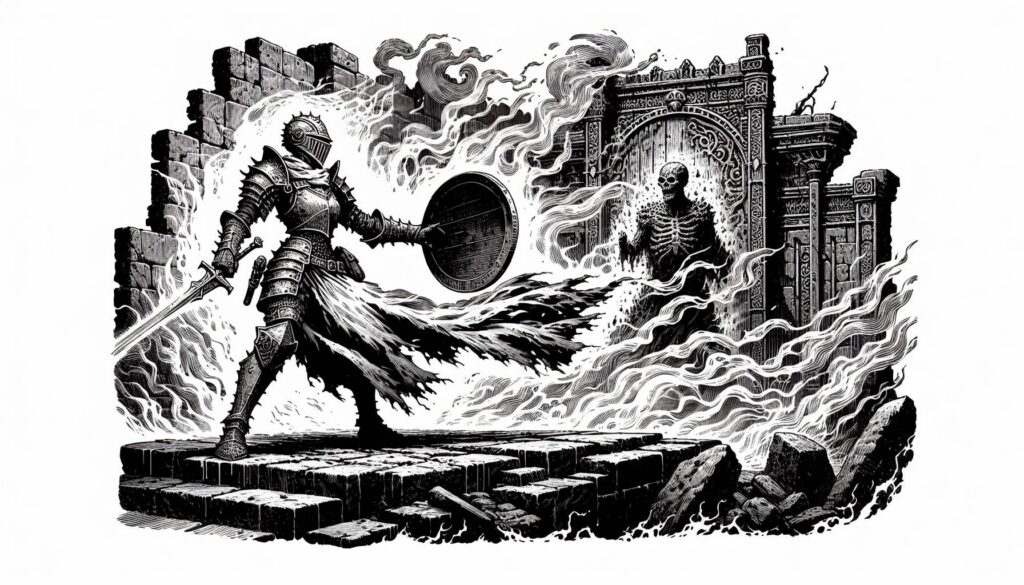
Designing Boss Fight Mechanics
Designing engaging boss fight mechanics is essential to making encounters dynamic and captivating. Players should face a variety of challenges within the fight that demand strategic thinking and adaptability. Innovative attack patterns, stage transitions, and environmental hazards can enhance the excitement, ensuring that each round of combat presents new surprises.
Incorporating mechanics like shifting arenas or multiple phases can dramatically change the battle’s flow. A boss’s lair may be rigged to transform, altering terrain or revealing traps as the fight progresses. Environmental hazards, such as collapsing ceilings or rising lava, add urgency and force players to balance offense with defense.
Dynamic combat keeps players invested and on their toes. Giving a boss unique abilities, such as controlling elements or summoning minions, ensures the fight doesn’t become a routine slugfest. Unexpected twists, like a boss’s sudden escape or transformation, inject new energy into the encounter, making the players rethink their strategies.
| Element | Description | Effect on Gameplay | Example Scenario |
|---|---|---|---|
| Shifting arenas | Terrain that changes mid-fight, altering strategies and movement options. | Forces players to continually adapt their positioning and tactics. | A collapsing cavern where rockfall blocks paths intermittently. |
| Multi-phase battles | Bosses that transition into new forms or abilities as health decreases. | Escalates tension and requires players to adjust strategies quickly. | A dragon that morphs from a fierce beast into a tempest of lightning. |
| Minion waves | Waves of lesser enemies that distract and overwhelm players. | Adds additional targets and challenges, increasing the complexity. | Swarms of goblins summoned by the boss to engage players. |
| Environmental hazards | Dynamic hazards like lava flows or rising floodwaters affect the battlefield. | Creates urgency and requires players to monitor their surroundings. | Lava geysers that erupt, pushing players into tactical retreats. |
| Hidden traps | Traps that trigger based on player or boss actions, adding unpredictability. | Introduces risk and surprise elements, enhancing the chaotic feel. | A pressure plate that activates a swinging blade trap upon stepping. |
| Bosses that adapt to players’ tactics | Intelligent enemies that change their attack patterns based on player behavior. | Keeps players on their toes and forces innovative approaches. | A sorceress that targets healers when players rely on them. |
| Summoning powerful allies or creatures | Bosses can call for help, creating new challenges in combat. | Diverts focus and adds layers to the encounter. | A lich summoning undead minions to bolster its defenses. |
| Illusions | Creates illusions that confuse or mislead players about the boss’s actions. | Challenges player perception and encourages investigation. | Fata Morgana creating duplicates of the boss that attack. |
| Interactive objects | Elements in the environment that can aid or hinder players when activated. | Encourages creative problem-solving and strategic use of the terrain. | Crumbling pillars that can be knocked down to create barriers. |
| Psychological warfare | Bosses that use taunts or insults to affect player morale and performance. | Introduces emotional stakes, influencing players’ decisions. | A villain mocking players, distracting them at critical moments. |
| Dynamic weather effects | Weather that alters battlefield conditions, impacting visibility and movement. | Adds an environmental layer to strategy, requiring tactical shifts. | A sudden storm reducing visibility and making ranged attacks harder. |
| Bosses that regenerate or heal over time | Bosses that regain health periodically, forcing players to keep up the pressure. | Encourages sustained aggression and long-term strategy. | A vampire lord healing in shadows unless forced into light. |
| Strategic weak points | Vulnerabilities that require specific attacks to exploit effectively. | Requires teamwork and encourages diverse character abilities. | A giant with a weak spot on its back that must be hit from behind. |
Balancing challenge and enjoyment is key. Boss fights should be tough, yet not discouragingly so. Your players should feel both tested and entertained, with each victory providing a sense of achievement. Smart adversaries that react to players’ actions elevate the gameplay, making every decision count.
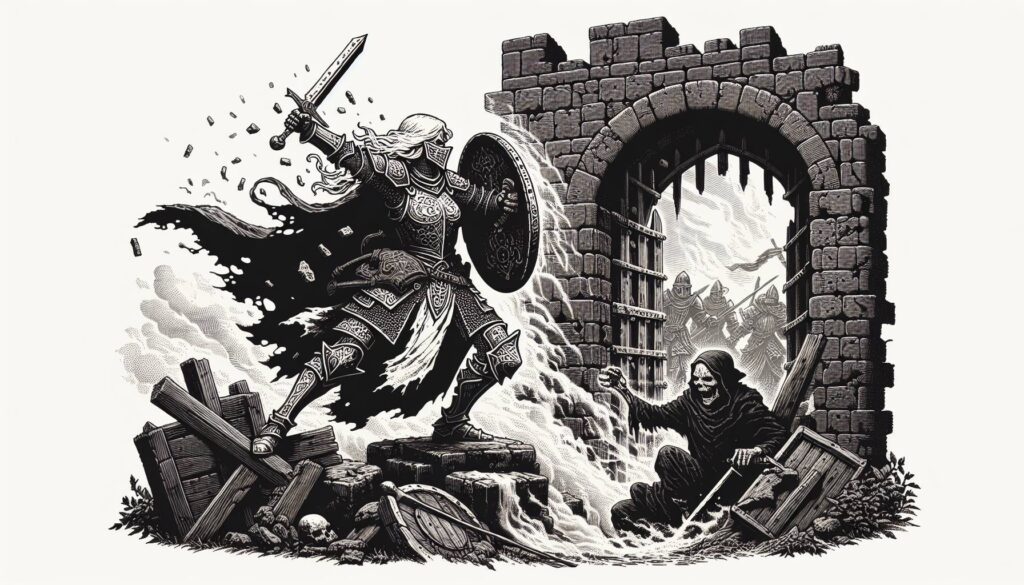
Epic Boss Fights in Different Settings
Adapting boss fights to various D&D settings enhances their narrative and visual impact. Each environment provides unique opportunities and challenges that shape the encounter’s style and strategy. Whether in the depths of a dungeon, the grandeur of a castle, or the ethereal beauty of a celestial realm, the setting can dictate the tone and logistics of the battle.
In a dungeon, claustrophobic corridors may limit movement but provide opportunities for tactical cover. In contrast, a boss fight in a sprawling castle might incorporate elements like trap-laden halls or towering battlements. Celestial realms introduce magical anomalies and gravity-defying landscapes, demanding innovative thinking from players.
| Aspect | Details |
|---|---|
| Setting the Scene | Create a vivid atmosphere to heighten tension. Describe the lair with sensory details—flickering torches casting shadows, eerie sounds, and the smell of smoke or decay. |
| Unpredictable Phases | Design the boss fight with multiple distinct phases, each introducing new mechanics or challenges, ensuring players must adapt their strategies as the fight evolves. |
| Environmental Hazards | Incorporate interactive elements in the environment, like destructible cover or traps, that can be manipulated for tactical advantage or pose new dangers. |
| Unique Abilities | Give the boss abilities that challenge players’ expectations, such as countering spells or imposing debuffs that force the party to rethink their approaches mid-battle. |
| Player Involvement | Encourage players to engage with the environment or create strategies that play to their characters’ strengths, harnessing their creativity for more dynamic play. |
| Consequences of Actions | Highlight the impact of players’ decisions by introducing consequences that can affect future encounters, enhancing the stakes and creating a more immersive experience. |
| Memorable Visuals | Make each phase visually striking, whether it’s through unique animations or thematic effects that signify the boss’s power or desperation as the fight progresses. |
| Engaging Dialogue | Include dynamic exchanges between the boss and players to personalize the encounter, adding depth and personality through taunts or desperate pleas as the battle unfolds. |
The environmental setting of a boss fight is not merely a stage but a vital storytelling element that shapes player experience. A well-designed lair can amplify the encounter’s drama, presenting unique hazards and opportunities that enhance both tension and excitement. For example, an icy cavern might introduce slippery terrain and frostbite hazards, forcing players to navigate carefully while engaging with the formidable foe. Conversely, a lush jungle could teem with hidden traps and unpredictable wildlife, making every step a potential risk as they seek to outmaneuver their adversary. By integrating the setting into the boss fight the right way, you as a DM can enrich the narrative and challenge players to adapt their strategies.
The emotional tone of the environment can also reflect the stakes of the battle, heightening immersion for the players. An ominous storm brewing overhead or an unsettling silence in an ancient ruin can foreshadow the intensity of the confrontation, signaling that they are about to face a life-altering challenge. DMs should pay attention to how the ambiance interacts with the overarching story—to create a narrative backdrop that envelops the players. A setting that resonates with the players’ past experiences or character arcs can infuse the fight with deeper meaning, turning a simple encounter into a cathartic moment that feels both personal and monumental.
Incorporating interactive elements within the environment also encourages players to think creatively. Whether it’s a collapsing structure, ancient mechanisms they can activate, or mystical artifacts that provide temporary boons, leveraging the surroundings can turn the tide of battle and foster teamwork. By allowing players to manipulate their environment strategically, the DM not only enhances the gameplay but also invites them to leave their mark on the story. Such inventive use of setting embodies the essence of collaborative storytelling, giving players agency and further intertwining their characters’ fates with the vivid tapestry of the encounter.

Humor in Boss Fights
Incorporating humor into boss fights offers a delightful counterbalance to tension. Comedic villains with absurd schemes or over-the-top personas inject levity into the encounter. A villain might have an inexplicable fear of ducks or a penchant for breaking into song at critical moments, turning the battle into a theatrical spectacle.
Comedy relieves pressure and creates memorable highlights. A boss who constantly forgets their own evil plan or summons bumbling minions can lighten the mood. Combat scenarios might involve a talking sword that offers unsolicited advice or a magical trap that triggers a burst of confetti instead of doom.
⚔️ Fantasy RPG Random Tables Books
Make life as a Gamemaster easier…
If you play Dungeons & Dragons, Pathfinder, or other fantasy RPGs, this
RPG random tables series
is packed with encounters, NPCs, treasure, and more. Available in eBook or print—either way, you’ll have a wealth of adventure ideas at your fingertips.
| Comedic Boss Fight Element | Description | Example Scene |
|---|---|---|
| 1. Unconventional Weakness | The boss has a bizarre weakness that the players can exploit. | A dragon that is deathly afraid of mice, causing it to flee. |
| 2. Absurd Minions | The boss summons ridiculously inept or silly henchmen. | Clumsy goblins that trip over each other while attacking. |
| 3. Over-the-Top Monologue | The villain delivers a dramatic monologue filled with humor. | A dark wizard who can’t stop quoting terrible puns. |
| 4. Magical Malfunction | Spells backfire in ridiculous ways, creating chaotic effects. | A fireball turns into an explosion of colorful confetti. |
| 5. The Fumbling Escape Artist | The boss attempts a dramatic escape but fails hilariously. | A villain trying to use a smoke bomb but just sneezes. |
| 6. Outrageous Battle Arena | The environment includes whimsical features that affect combat. | A battlefield filled with bouncing mushrooms and slippery slides. |
| 7. Cowardly Taunts | The boss uses funny insults or challenges to distract players. | “Is that the best you can do? My grandma hits harder!” |
| 8. Preposterous Weapon | The villain uses an absurdly large or ridiculous weapon. | A giant rubber chicken that inflicts oddly specific damage. |
| 9. Unpredictable Transformations | The boss changes forms in ridiculous yet strategic ways. | A sorceress who morphs into a giant cat mid-fight. |
| 10. Clumsy Attempts at Dialog | The boss tries to negotiate but ends up rambling in absurdity. | “Let’s talk it out! Or… let’s talk about the weather! Who doesn’t love a good forecast?” |
| 11. One-liners and Catchphrases | The boss delivers comedic lines throughout the battle. | “You think this is a magic show? Well, get ready for the grand finale!” |
| 12. Dancing Between Attacks | The boss has an unnatural, funny way of moving in battle. | A villain moonwalking away from attacks while making jazz hands. |
| 13. Show-off Abilities | The boss performs overly elaborate moves that backfire. | A villain attempting a flashy spell that ends with them tangled in their own magic. |
| 14. Ridiculous Conditions | The encounter has absurd conditions players must navigate. | Players must jump rope while attacking due to magical bindings. |
| 15. Comedic Victory Conditions | Winning involves a funny or absurd requirement. | Instead of defeating the boss, players must convince them to take up knitting. |
Balancing humor with tension maintains engagement and stakes. While laughter eases the pressure, it shouldn’t diminish the sense of danger. A well-timed joke or an unexpected sight gag can make the battle memorable without losing the player’s investment in the outcome.

Boss Fight Prep: A DM’s Checklist
Preparation is crucial before staging an epic boss fight. Thorough planning ensures that the DM can manage the complex elements of the encounter smoothly. A checklist helps anticipate player tactics and prepare NPC reactions, making the transition from story to battle seamless.
DM’s Boss Fight Prep Checklist:
- Establish the boss’s backstory and motivation.
- Design the battleground with dynamic terrain.
- Plan the boss’s abilities and attack patterns.
- Outline potential phases and transformations.
- Prepare environmental hazards and traps.
- Develop a narrative hook for the encounter.
- Anticipate players’ tactics and possible outcomes.
- Create compelling monologues or taunts.
- Arrange for minions or summoned allies.
- Have contingency plans for unexpected player actions.
- Set the pace and flow of the battle.
- Include plot twists to maintain suspense.
- Prepare for post-battle narrative wrap-up.
- Ensure all game mechanics are clarified and understood.
Being prepared allows DMs to adapt in real-time, making the fight flow smoothly while maintaining engagement. With a solid plan, they can confidently manage the boss fight’s progression, keeping players thrilled and invested from start to finish.
Player Tactics for Tackling Titans
For players, approaching an epic boss battle requires teamwork, resource management, and creative thinking. Success lies in coordinating efforts, understanding the boss’s weaknesses, and effectively using the environment to their advantage.
Players should prioritize teamwork, balancing roles to maximize efficiency. Each character’s abilities should complement the party’s strategy, with tanks drawing aggro, healers maintaining health, and damage dealers exploiting vulnerabilities. Effective communication allows for quick adjustments based on the battle’s progression.
| Player Tactics for Tackling Titans | Description |
|---|---|
| Identify and exploit boss weaknesses | Understanding the boss’s vulnerabilities can turn the tide of battle. Players should keenly observe the boss’s attack patterns and resistances, looking for opportunities to deal critical damage. |
| Use terrain for cover and advantage | Positioning is vital. Players can use the environment to shield themselves from powerful attacks or gain a bonus on their actions, thus leveraging terrain to create strategic advantages. |
| Disrupt the boss with control abilities | Spells or abilities that incapacitate, restrain, or otherwise hinder the boss can create openings for the party. Utilizing crowd control effectively can neutralize a significant threat. |
| Coordinate attacks for maximum impact | Timing and teamwork are essential. Players should plan their moves to synchronize powerful strikes, ensuring they hit at the right moment for devastating impact. |
| Reserve powerful spells or items for critical moments | It’s wise to save the most potent spells or items for key moments in the fight when they can have the most significant effect, changing the course of battle with a bold strategy. |
| Adapt strategies based on boss phases | As the fight evolves, so should tactics. Players must remain flexible, reassessing their approach as the boss changes tactics, ensuring they stay ahead of the threat. |
| Protect vulnerable party members | Keeping allies safe, especially those who are more fragile, is crucial. Players should strategically position themselves to shield their teammates from the worst of the boss’s attacks. |
| Communicate effectively to avoid chaos | Clear communication helps avoid misunderstandings in the heat of battle. Players should share their intentions to keep the party cohesive and their strategies aligned. |
| Manage resources carefully throughout the fight | Resource management, including spell slots and health potions, is critical for survival. Players should track usage throughout the encounter, ensuring they can last till the end. |
| Exploit environmental elements to shift the tide | The battlefield often holds secrets. Players should look for ways to utilize the environment, such as triggering traps or using elements to create distractions, to gain an upper hand. |
| Keep morale high and inspire creativity | Encouragement and camaraderie can boost a party’s performance. Sharing ideas and fostering a positive atmosphere can lead to unexpected strategies and solutions in the face of adversity. |
Thinking outside the box and collaborating on strategies turn daunting encounters into opportunities for heroism. Players should embrace innovative tactics, ensuring each member shines and contributes to their collective victory.
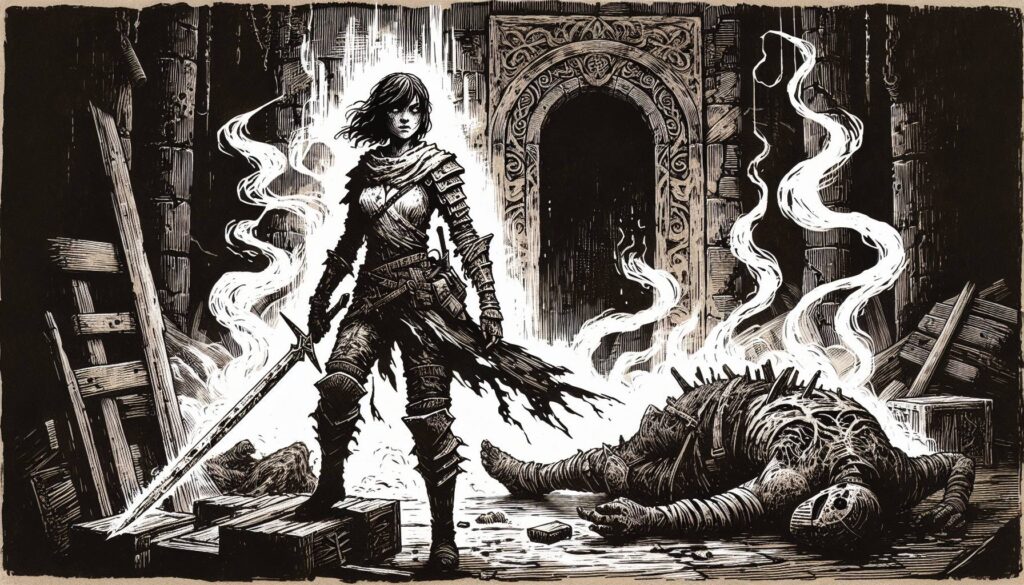
Adapting to Player Actions Mid-Fight
For DMs, responding dynamically to players’ unexpected moves during boss fights is essential. Each clever tactic or spur-of-the-moment decision from the players can provide a unique opportunity to enhance the narrative. By improvising and maintaining balance, DMs can ensure the story remains cohesive while keeping the encounter fair and enjoyable for all participants. This adaptability fosters creativity and allows for an organic evolution of the battle, making it feel less scripted and more alive, where players’ contributions shape the outcome in meaningful ways. Flexibility in combat mechanics also enables DMs to adjust pacing or difficulty as needed. If the players are facing a particularly tough time, introducing a brief moment of reprieve—such as a sudden environmental shift or a temporary ally arriving—can help them regain their footing without diminishing the challenge. Conversely, if the party is swiftly overpowering the boss, a DM can modify the boss’s behavior, perhaps unleashing a desperate final attack or revealing a new, formidable ability. Such responsive changes keep the stakes high and the excitement palpable, ensuring that the boss fight remains a thrilling spectacle. Ultimately, being receptive to player creativity not only enriches the story but also fosters deeper engagement within the group. When players see their ideas transform into exciting developments within the game, it heightens their investment in both their characters and the overarching narrative. These unforgettable moments—as a player’s ingenuity turns the tide of battle—become legendary tales that players recount long after the final blow has been struck, solidifying the boss fight as a cornerstone of their shared adventure.
Strategies for DM Adaptation
The flexibility in boss fight mechanics allows for numerous tactical enhancements that can enrich the encounter significantly. Consider employing the following strategies to keep the players engaged and the stakes high:
- Alter boss tactics in response to player moves: If players devise clever strategies, let the boss react accordingly, adapting its attacks and defenses to counter their plans.
- Introduce new phases if players are dominating: As the encounter progresses, implementing unexpected changes can shift the tide of battle. A second phase might unleash new attacks or change the boss’s strategy altogether, preventing a sense of routine.
- Adjust environmental hazards for added challenge: If players find themselves overpowering the boss, introducing new environmental threats—like a shifting floor or encroaching lava—can raise the tension and require on-the-fly strategy adjustments.
- Change minion behavior to reflect the situation: If the boss employs minions, consider updating their tactics based on the players’ actions. Minions might begin to protect the boss more fervently or aim to disrupt player strategies in unexpected ways.
- Use narrative twists to heighten drama: Introducing sudden narrative shifts, such as the revelation of the boss’s tragic backstory or a betrayal from an ally, can infuse the encounter with emotional depth and urgency.
- Inject humor to defuse tension if needed: If the mood has become too intense, a lighthearted moment, perhaps with the boss’s comical quips or blunders, can create a balance that keeps the players entertained while still engaged in the fight.
- Avoid predictability by varying boss attacks: Keep players on their toes by mixing up attack patterns and introducing unique abilities that require them to think strategically and adapt quickly.
- Scale difficulty up or down as required: Assess the players’ performance throughout the battle and adjust the difficulty accordingly. If they are struggling, a moment of respite might be in order; if they are dominating, intensifying the fight can keep the excitement alive.
- Reward player creativity with positive outcomes: When players come up with unique approaches or tactics, consider rewarding them with successful outcomes that reflect their ingenuity, enhancing their investment in the encounter.
- Keep the story’s flow smooth despite surprises: Ensure that any unexpected changes to the battle maintain coherence with the overarching narrative, allowing for an organic progression that enhances the story.
- Allow narrative flexibility for character development: Emphasize opportunities for character arcs to be explored during the encounter. Moments of crisis or epiphany can reflect well on character growth in the face of formidable odds.
- Ensure fairness while maintaining challenge: Striking a balance between providing a challenging experience and keeping it fair is essential. Players should feel tested, not overwhelmed, ensuring that victory feels earned.
- Encourage player improvisation with adaptable scenarios: Create situations where players can take initiative and think outside the box. Providing contexts that allow for creative problem-solving makes every session unique and memorable.
Implementing these strategies not only enriches the dynamic of the encounter but also allows for a more immersive and engaging experience, where players’ actions lead to meaningful consequences in their shared adventure.
Flexibility in battle is a crucial element that transforms a standard gaming session into an extraordinary adventure, allowing the story to take exhilarating new directions. The unpredictability of player actions injects a sense of excitement and spontaneity into each encounter, crafting dynamic and memorable experiences that resonate long after the game concludes. As players navigate through the intricacies of their roles, the course of the battle can shift dramatically based on their decisions, showcasing the importance of adaptability in storytelling.
⚔️ Fantasy RPG Random Tables Books
Make life as a Gamemaster easier…
If you play Dungeons & Dragons, Pathfinder, or other fantasy RPGs, this
RPG random tables series
is packed with encounters, NPCs, treasure, and more. Available in eBook or print—either way, you’ll have a wealth of adventure ideas at your fingertips.
Dungeon Masters play a pivotal role in this flexibility. By skillfully adjusting the narrative in response to player creativity, they can weave an epic tale that feels not only engaging but deeply personal. When players realize that their choices genuinely affect the unfolding story—whether it’s through clever tactics in combat or innovative problem-solving outside of it—investment in the narrative grows. The emotional stakes rise as characters grapple with the consequences of their actions, creating a rich tapestry of experiences filled with triumphs and setbacks alike.
Try my AI Tabletop RPG generators...and an extensive library of content!
For instance, consider a scenario where the party faces a powerful dragon, its scales glistening like emeralds under the flickering torchlight. Instead of a typical straightforward battle, one player might devise a clever distraction by using their Bardic skills to perform an impromptu song that intrigues the dragon. This unexpected move could lead to the dragon pausing, giving the party a precious moment to regroup and strategize. The DM, quick to adapt, seizes this opportunity to introduce new elements, such as the dragon’s hidden vulnerability to specific types of magic or an unexpected ally in the form of a captive adventurer who possesses vital knowledge about the beast.
Such moments bring the narrative alive, making every choice a potential turning point that could lead to victory or defeat. The richness of the story is enhanced by the players’ imaginative contributions, encouraging them to delve deeper into their characters’ personalities and backstories. Instead of acting merely as pieces on a game board, they become fully realized individuals whose motivations and desires drive the action.
As players forge their paths, they not only participate in physical battles but also in a grand narrative that reflects their journey—a tale marked by bravery, sacrifice, and friendship. In this ever-evolving landscape of fantasy and heroism, the possibilities are as boundless as the imaginations of those who partake in the adventure. Through this lens of flexibility and adaptation, DMs can craft stories that are not just played but lived, resulting in a truly extraordinary experience where every decision matters and every encounter can change the course of the tale forever.
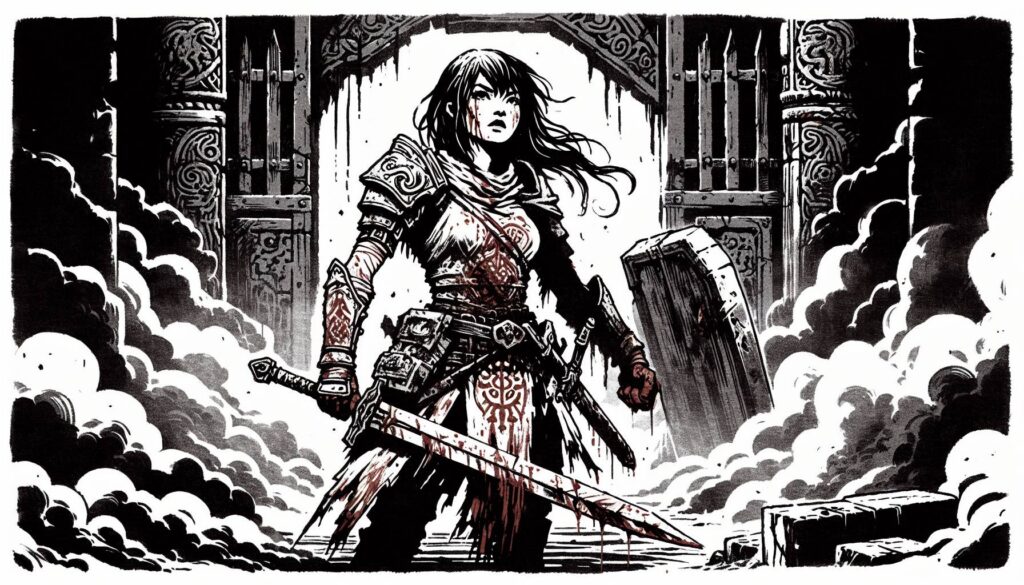
Final Reflections on Epic Boss Fights
Epic boss fights are the crowning moments of D&D campaigns, where every die roll can shift the tides of fate and every decision echoes throughout the story. They provide the joy of orchestrating dramatic encounters and the narrative depth that enriches the journey, allowing DMs to unleash their wildest creations and players to step into the spotlight. These high-stakes battles become arenas where creativity thrives, sparking moments of epic heroism and unexpected hilarity that turn into legendary tales around the gaming table. In these encounters, players showcase their growth and abilities against formidable foes, transforming from humble adventurers into seasoned champions. As climaxes of narrative arcs, boss fights reward perseverance and ingenuity, solidifying the campaign’s story and leaving lasting impressions etched in the minds of all who partake. With each swing of a sword and casting of a spell, players weave their fates into the fabric of the narrative, crafting unforgettable moments that will be retold for years to come. Blending creativity with careful planning ensures that each boss fight stands as a masterpiece of storytelling and strategy. DMs can elevate these moments by embracing the chaos and unpredictability inherent in the game—embracing the surprises that players bring to the table and adapting on the fly. By balancing challenge and fun, DMs create rich experiences that captivate and entertain while players revel in the satisfaction derived from overcoming these formidable trials. In the grand tapestry of a D&D campaign, epic boss fights are not just battles—they are milestones of achievement and narrative triumph. They encapsulate the essence of the game: teamwork, shared storytelling, and the celebration of overcoming challenges together. Each climactic clash embodies the spirit of cooperation, bringing players and DMs together in moments of joy, tension, and camaraderie that resonate long after the dice have settled. So gear up, roll those dice, and prepare for the chaos—because every great adventure deserves an epic showdown!


